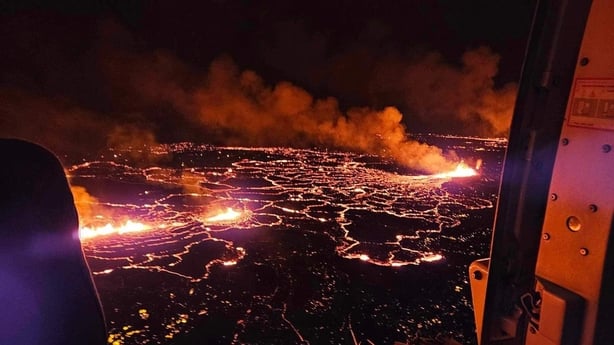The power of the Icelandic volcano that erupted late last night was decreasing, the country's meteorological office said in a statement.
Gas pollution could still occur in the area of the capital Reykjavik late this evening or tomorrow morning, it added.
The lava from the eruption appeared to flow away from the only town in the area, offering hope that homes would be spared, geologists and rescue officials said.
The eruption on the Reykjanes peninsula in southwest Iceland spewed lava and smoke more than 100 metres into the air after weeks of intense seismic activity.
"The eruption does not present a threat to life," an Icelandic government statement said.

"There are no disruptions to flights to and from Iceland and international flight corridors remain open."
Images and live streaming of the eruption shown by Reuters and others showed bright yellow, orange and red lava in sharp contrast against the night sky.
The eruption opened a 4km fissure from which lava fountains emerged.
But at its southernmost point the crack was still 3km away from Grindavik, Iceland's Meteorological Office said.
"The eruption is taking place north of the watershed, so lava does not flow towards Grindavik," geologist Bjorn Oddson told public broadcaster RUV.
Located between the Eurasian and the North American tectonic plates, among the largest on the planet, Iceland is a seismic and volcanic hot spot because the two plates move in opposite directions.
The Reykjanes peninsula in recent years saw several eruptions in unpopulated areas.
In March 2021, lava fountains erupted from a fissure in the ground measuring between 500 to 750 metres long in the region's Fagradalsfjall volcanic system.
Volcanic activity in the area continued for six months that year, prompting thousands of Icelanders and tourists to visit the scene.
In August 2022, a three-week eruption happened in the same area, followed by another in July of this year.
